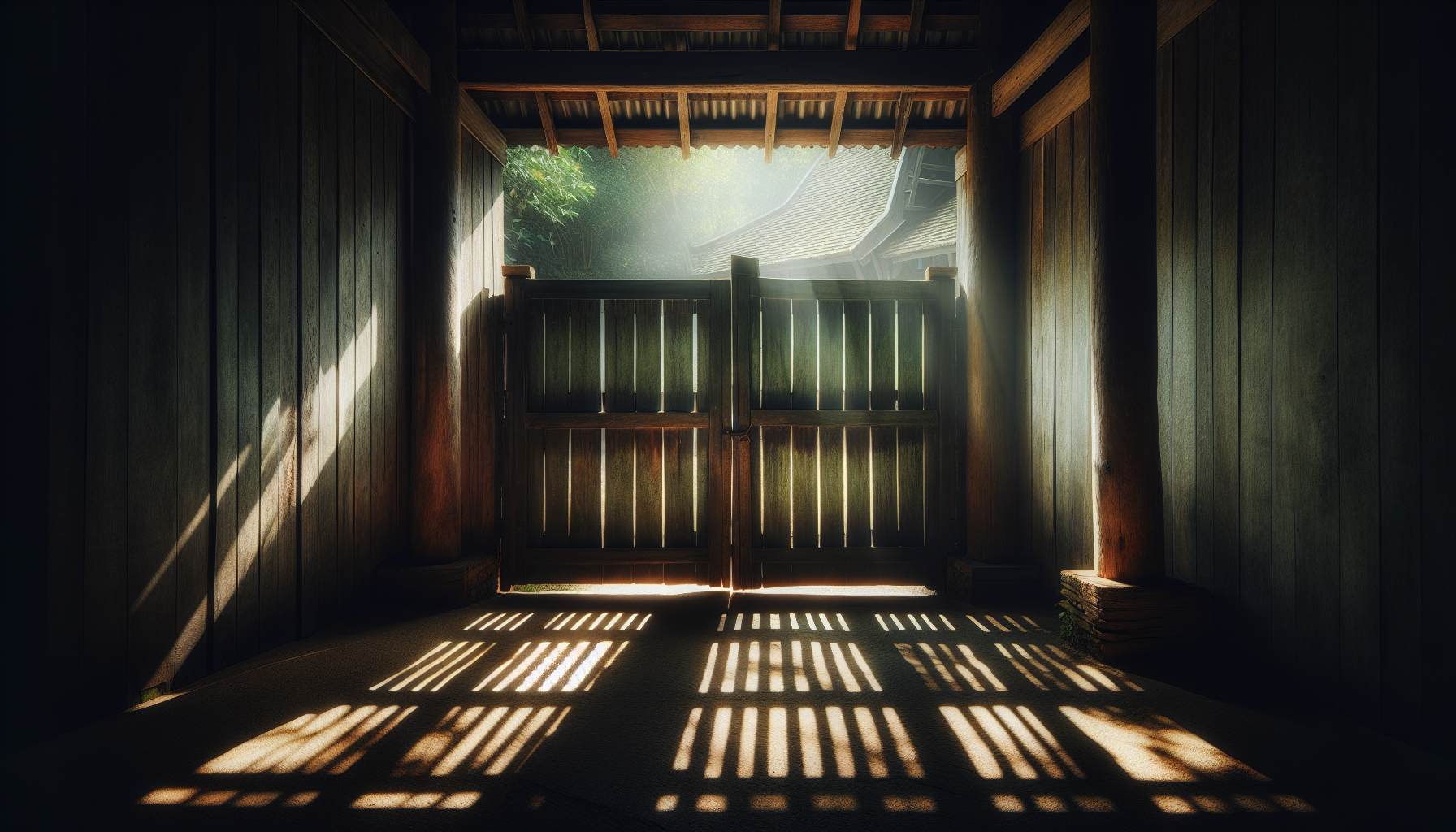
Through this ingenious storytelling approach, Kurosawa dismantles the traditional linear narrative. Instead of a straightforward progression, the viewer is treated to a puzzle of human experience, where the climax of the plot is not just what happens but how it is perceived by those involved. This mirrors the complexities of real-life storytelling, where each witness might carry their own version of events, colored by their emotions and circumstances.
The back and forth of the various testimonies builds a rich tapestry, as each scene reveals new layers of meaning. For instance, the way the bandit, the woman, and the woodcutter recount the same incident not only alters the facts but also unveils their inner motivations and flaws. This fragmented style distills the essence of Rashomon, illustrating that truth is often a matter of perspective rather than a singular, objective reality. Viewers are left contemplating the elusive nature of truth itself, caught in a web of differing narratives that question the reliability of memory and the essence of human morality.
Cinematographic Innovations and Techniques

In Rashomon, Kurosawa revolutionizes cinematography, pushing the boundaries of visual storytelling. A standout feature is the innovative use of light and shadow, which creates a stark contrast that enhances the emotional weight of each scene. The interplay between light and shadow not only mirrors the ambiguous nature of the narrative but also underscores the moral complexities faced by the characters. For instance, in moments of tension, the stark chiaroscuro effects draw viewers into the psychological turmoil of the figures, making each frame an evocative exploration of human emotion.
The dynamic camera movements are another hallmark of Kurosawa’s style. The director employs a fluidity that immerses the audience in the action, often placing them in the midst of the unfolding drama. One memorable example is the way the camera tracks the woodcutter as he navigates the forest. This movement not only establishes a sense of location but also connects the viewer intimately with his thoughts and doubts, elevating the immersive experience. The cinematography is filled with sweeping shots that contrast against tighter, more intimate close-ups, which bring the viewer face-to-face with the characters’ conflicting emotions.
Kurosawa’s thoughtful framing also plays a pivotal role in shaping the narrative. He crafts compositions that guide the viewer’s understanding of each character’s perspective. For instance, when the bandit recounts his version of events, the camera angles are often low, making him appear larger than life, embodying his bravado and confidence. Conversely, during the woman’s recounting, the framing shifts to focus on her expressions and emotional instability, elevating her vulnerability. This clever use of perspective not only showcases individual character traits but also adds layers to the overall storytelling, revealing the biases inherent in each account.
Furthermore, Kurosawa utilizes natural elements in striking ways. Rain, for example, becomes more than just a backdrop; it symbolizes the weight of truth and the emotional turmoil of the characters. The rain-soaked scenes create a somber atmosphere that heightens the tension and reflects the chaotic nature of the narratives. Each drop seems to echo the characters’ internal struggles, amplifying the uncertainty that pervades Rashomon.
The director’s tendency to keep the camera stationary at key moments also provides a powerful contrast to the otherwise dynamic cinematography. By allowing the audience to linger on a pivotal scene, he invites deep reflection on the unfolding drama. This technique adds gravity to moments of revelation, letting the implications of each character’s perspective resonate long after the scene has ended. In Rashomon, cinema is elevated to an art form where every shot is steeped in significance, encapsulating the profound philosophical undercurrents of the story.
Character Perspectives and Subjectivity
Kurosawa’s masterpiece thrives on the fluid interplay between character perspectives and the subjectivity of human experience. Each character’s retelling of events in Rashomon not only unveils their personal biases but also draws the audience into a complex exploration of self-identity. The bandit exudes confidence and bravado, reflecting a certain charm and allure, while the woman’s perspective reveals deep vulnerability and fear. The woodcutter, a silent observer turned reluctant participant, grapples with guilt and moral ambiguity. This rich tapestry of divergent viewpoints transforms the film into a mosaic of human psyche, illustrating that truth is seldom singular and always filtered through one’s own context.
The distinct stylistic choices in character portrayal amplify these subjective narratives. Kurosawa carefully crafts scenes where the physicality of the characters enhances their emotional states. For instance, the positioning of characters in relation to one another becomes a visual metaphor for their psychological distance or proximity. In scenes where the bandit is depicted as dominating the frame, the viewer feels the weight of his self-justification. Conversely, when the camera shifts to focus on the woman’s expressive face, the audience is invited to empathize with her plight, creating a profound resonance with her suffering.
Furthermore, the overlapping dialogue in the reported memories creates a cacophony of conflicting truths, emphasizing the chaos inherent in human perception. Each character’s narration overlaps with another’s, not merely as an auditory technique but also as a means to illustrate how each person’s recollections bleed into and modify one another. This serves to underscore that the act of storytelling itself is an inherently subjective endeavor, colored by individual emotional landscapes. The relentless push and pull of these narratives force the viewer to confront the paradox of shared experiences that are distinctly personal.
Through this multi-faceted lens, Rashomon compels audiences to engage critically with the nature of truth. It raises poignant questions about accountability, the reliability of memory, and the moral complexities that accompany human relationships. Each character’s perspective, while offering a piece of the puzzle, also serves to obfuscate the reality of the event, mirroring the convoluted nature of life itself where motivations and perceptions are rarely clear-cut. The psychological depth fleshed out by Kurosawa through these perspectives transforms a single incident into a vigorous dialogue about humanity, making the film a timeless exploration of truth and morality.
Sound Design and Its Role in Storytelling
Sound design in Rashomon functions as a subtle yet profound element of storytelling that deeply influences the audience’s engagement with the narrative. Kurosawa meticulously curates the soundscape to reflect the film’s thematic complexity and emotional depth. The use of ambient sounds, for instance, plays a critical role in evoking a sense of place, immersing viewers in the dense, atmospheric forest where the story unfolds. The rustling leaves, distant animal calls, and the rain create an environment that feels almost alive, echoing the characters’ inner turmoil and heightening the tension.
Dialogue in Rashomon further enriches the subjective experience of each character. Each retelling is not only infused with personal bias but is also accompanied by specific tonal shifts that reflect the emotional stakes at play. The bandit’s brash and confident voice contrasts sharply with the soft, trembling tone of the woman, portraying the gulf between their experiences. This layering of sound brings forth their differing perceptions of the same traumatic incident, allowing the audience to pick up on subtleties that enhance understanding of character motivations. As each character narrates, their emotions bleed into their words, revealing layers of truth that might go unnoticed without the context provided by sound.
Moreover, Kurosawa employs silence deliberately—moments of stillness amplify the weight of the characters’ revelations. In scenes where the truth hangs heavy in the air, the absence of sound can evoke poignant reflection. This use of quiet serves as a powerful narrative tool, compelling audiences to confront uncomfortable realizations or moral dilemmas presented within the film. For example, the silence that follows a particularly charged exchange allows viewers to digest the conflicting accounts and their emotional ramifications.
The interaction between sound and visual elements is equally significant in reinforcing the film’s themes. The frantic rustling during moments of chaos juxtaposed with serene, melodic cues during reflective passages create a dynamic audio experience. This contrast amplifies the disarray of the characters’ memories, underscoring how emotions can distort perceived reality. The use of non-diegetic sound also adds an additional layer, with musical cues that signal shifts in emotional tone or thematic emphasis, guiding the audience’s responses to each unfolding testimony.
Kurosawa’s innovative approach to sound design not only enhances the storytelling but also invites the audience to reconsider the nature of truth in communication. The way sound shapes the narrative mirrors the film’s exploration of subjective reality, suggesting that just as characters interpret events through their personal lenses, so too do we listen and respond to those interpretations based on our experiences. This nuanced layering of sound enriches the film’s complexity, making Rashomon not just a visual feast but a rich auditory journey that resonates long after the credits roll.
Themes of Truth and Morality in Cinema
Rashomon delves into profound themes of truth and morality, inviting viewers to ponder the fragile nature of what we perceive as reality. Within the layered narratives, Kurosawa skillfully interrogates the very essence of honesty and integrity, illustrating how personal biases distort perceptions. Each character’s retelling of the same event serves as a mirror reflecting their innermost thoughts and flaws. The bandit’s recounting oozes bravado, exuding a sense of charm that masks deeper insecurities, while the woman’s testimony is steeped in anguish, revealing her vulnerability. The woodcutter, as the reluctant witness, grapples with the moral implications of his own account, embodying ambivalence that leads the audience to question their judgments about each character.
The recurrent question of truth permeates each frame of Rashomon, as the film prompts reflections on the impossibility of an unmediated reality. In life, the narratives we tell are infused with our unique perspectives, colored by emotions, experiences, and desires. Kurosawa foregrounds this complexity, suggesting that truth is less a definitive endpoint and more a blurred spectrum of understanding. This thematic exploration is particularly potent when considering how societal norms shape morality. The various testimonies encourage viewers to grapple with notions of right and wrong and the consequences of moral relativism.
Kurosawa’s engagement with these themes resonates beyond the confines of the film itself, inviting audiences to reflect on their own experiences. The portrayal of conflicting accounts hints at a broader commentary on human relationships and the inherent flaws in communication. This isn’t merely a philosophical inquiry; it’s a profound examination of how trust and accountability weave through the fabric of human interaction. The way a single event can be dissected and reinterpreted through arbitrary lenses challenges viewers to reconsider their understanding of fairness and justice.
Moreover, the emotional weight of conflicting accounts serves not only to push the narrative forward but to immerse audiences in an unsettling realization: how often do we accept a narrative based solely on the storyteller’s delivery? Rashomon peels back the layers of human experience, revealing that every shared story carries within it the baggage of the teller’s psyche. By juxtaposing various perspectives, Kurosawa lays bare the notion that advanced storytelling techniques are not merely artistic choices but rather essential tools for navigating complex moral landscapes.
<pIn essence, Rashomon is not just a cinematic achievement but a philosophical exploration, questioning whether truth can ever be fully grasped. The film deftly dismantles the common dichotomy of black and white morality, pushing viewers to embrace the gray areas where humanity resides. As such, it stands as a timeless reminder that storytelling, imbued with diverse interpretations, is a fundamental part of how we make sense of our world.

